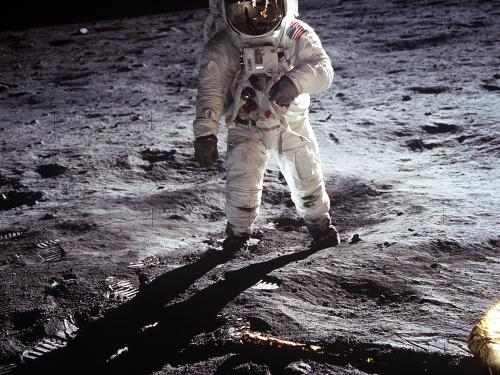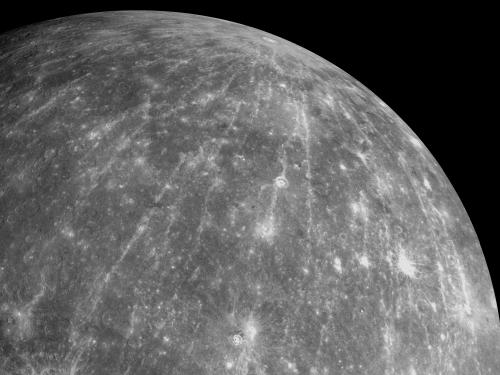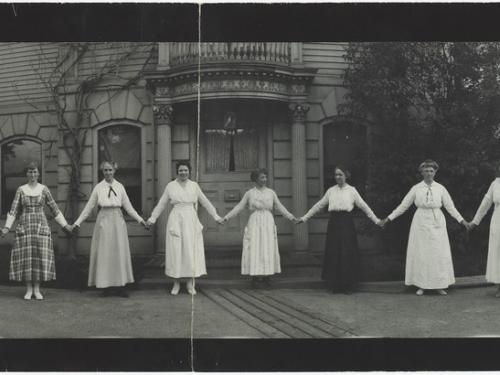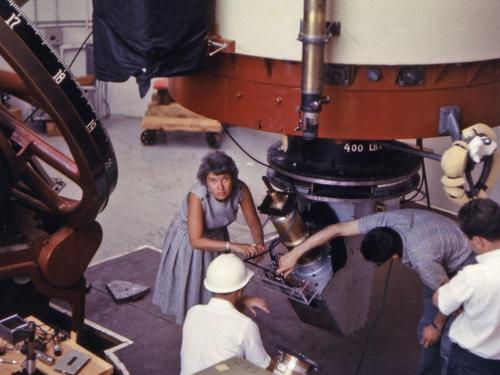
Stories of daring, stories of technological feats, stories of prevailing against the odds ... these are the stories we tell at the National Air and Space Museum. Dive in to the stories below to discover, learn, and be inspired.
Showing 41 - 50 of 156

November 09, 2021
The Apollo program, which landed the first human on the Moon, ended in December 1972 with Apollo 17. Why did we stop?

October 27, 2021
The Sun has been an inspiration in our creation of paintings, poems, music, stories, and sculptures, to name a few. Explore how artists express and depict the Sun in works throughout the Smithsonian’s collections.

October 14, 2021
Mirror, mirror under the football field, what secrets of the universe will you yield? Okay, so we’re terrible poets (except maybe Matt). But we are feeling a bit reflective these days, so we’re taking this opportunity to ponder reflecting telescopes of all sizes, shapes, and types. Reflectors use mirrors to gather light and produce an image. Some are meant for space (we’re looking at you Hubble and JWST), and others are used here on Earth. In this episode, we’re taking you into two labs – one under the football stadium at the University of Arizona that makes some of the biggest telescope mirrors in the world, and another under the house (okay, it’s a basement) of someone who makes their own telescope mirrors at home. Same deal, way different scale. We promise this one isn’t a grind!

September 29, 2021
The first high-altitude piloted balloon observation missions were launched in the late-1950s as part of the U.S. Navy’s Strato-Lab program. Between 1958 and 1959, the U.S. Navy launched four separate missions for numerous celestial observations high up in the atmosphere. Before projects like the Hubble Space Telescope was even a concept, images which were once thought to be impossible to capture were taken via telescopes carried by balloons, such as those of Operation Stargazer.

September 26, 2021
The Hubble Space Telescope and its breathtaking views of the universe exist in part because of a practice called the Decadal Survey on Astronomy and Astrophysics. The astronomy community anxiously awaits next Decadal Survey update the to see the latest recommendations from a 50-plus year process that has led to some of the most groundbreaking and iconic projects in modern astronomical history. Learn how will it direct the future of astronomical research.

September 14, 2021
Mercury is a one-plate planet, and as the smallest of the terrestrial planets of our solar system, it has a lot to teach us about how small rocky planets evolve. Read about a perspective of Mercury has that been determined from images and data returned by spacecrafts Mariner 10 and MESSENGER.

May 16, 2021
Astronomers at Harvard’s central observatory in Cambridge, Massachusetts, and its new observatory in Arequipa, Peru, ultimately produced over 500,000 glass plate images of the night sky. Directors of the Harvard College Observatory hired women to study, organize, and care for its immense glass plate collection in Cambridge.

April 08, 2021
Have you ever wondered how the stuff in space gets named? These days, there’s one organization that approves and keeps track of ALL of the official names from stars and asteroids to mountains on Mars and geysers on Enceladus. We break down the naming process and some of our favorites on today’s episode!

April 06, 2021
The concept of black holes isn't new — scientists first theorized their existence in the early 20th century. But in the last few years, our knowledge of black holes has expanded exponentially — from the confirmation of supermassive black holes at the center of galaxies to the first ever image of a black hole captured by the Event Horizon Telescope.

March 31, 2021
Initially called the Large Synoptic Survey Telescope, the Vera C. Rubin Observatory was renamed to honor a pioneer in astronomy, particularly in the field of dark matter. The observatory is perched on Chile’s Cerro Pachón in the foothills of the Andes Mountains and stands as a doorway into exploring the women of Chilean astronomy.